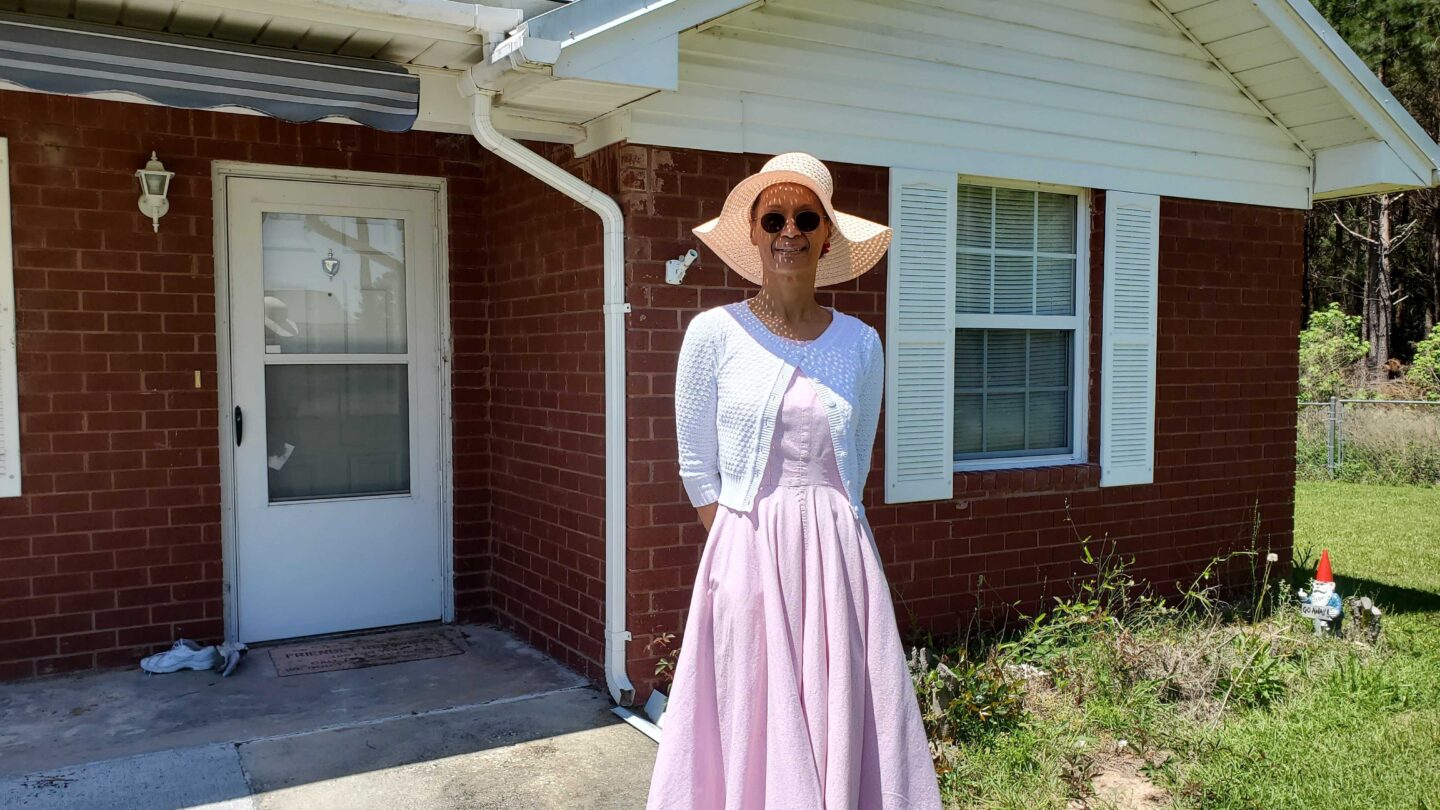This coverage is made possible through a partnership with WABE and Grist, a nonprofit, independent media organization dedicated to telling stories of climate solutions and a just future.
When Jackie Jones bought her house in Reidsville, a city located in Southeast Georgia, she did her research.
“The very first thing I did was look, you know, to see if it flooded in this area and what the insurance rates would be,” she said. “It said it was absolutely no flooding in this area.”
The Federal Emergency Management Agency’s official maps don’t list her property as a flood zone, so Jones’ bank didn’t require her to buy flood insurance. And based on that map, she trusted it wouldn’t flood.
But, in reality, when it rains a lot, rainwater pools on her property, thanks to poor drainage on the street, a low-lying yard and water underground. Jones said it can come up just below her windows and has flooded her garage.
“People tell me I need to put fish in here and start fishing,” she joked. “So yeah, all of this floods, everything that you see.”
It’s a common story under the National Flood Insurance Program, which FEMA administers. Whether a homeowner needs flood insurance, and how much they pay, is based on maps that are often out of date, imprecise and lacking key information.
That means that for years many Georgia homeowners have been paying the wrong price for flood insurance: overpaying to insure a house that never floods, or underpaying for one that floods repeatedly. Now, FEMA is hoping to fix that with a new rating system it calls Risk Rating 2.0.
“My house could be rated an X Zone, which does not require flood insurance currently,” said Savannah realtor Steven Fischer of the old system. “And I might be paying $500 a year if I voluntarily buy it, versus the house directly across the street or right beside me, they could be in an AE zone and be paying $2,000 a year.”
In reality, those neighboring houses have a pretty similar flood risk. But on paper, their rates and requirements are wildly different.
It’s up to Congress to change the rules about which properties have to be insured based on their flood risk level. But FEMA is trying to fix the flood insurance rates for the homeowners who are already required to buy it. As part of the National Association of Realtors insurance committee, Fischer worked on Risk Rating 2.0.
“It rates each individual property based on its flood risk, and each individual property is charged based on their individual risk,” he explained.
It factors in flood history, elevation, the type of construction, the distance from a river or ocean and more – as well as the cost to rebuild. It means a lot of homeowners, especially on the coast, can expect their flood insurance rates to increase.
For instance, there are 3,614 flood insurance policies in Camden County, Ga., according to Scott Brazell, who coordinates the county’s flood protection program. About 3,000 of them can expect premiums to increase by about $10 a year, he said.
Houses in the highest-risk areas of the Georgia coast could see much bigger increases, and some homeowners whose risk was exaggerated by the old system could pay less.
FEMA says this system is fairer. For decades, lower-risk homeowners have overpaid and effectively subsidized artificially low rates for the highest-risk properties.
Flood risk is a fact of life on the coast, Brazell said, and so is the cost that comes with it – whether that’s the cost of insurance or the cost of rebuilding after a catastrophic flood. Because of the risk, he advises everyone in Camden County to purchase flood insurance even if they’re not required to.
“Mother nature doesn’t follow the flood maps,” he said.
Brazell likened flood insurance to having an additional mortgage payment every year.
“We want to minimize that 13th payment as much as we can,” he said.
Homeowners can earn discounts on their flood insurance by taking steps to protect their houses, like elevating them higher off the ground. Camden County and other cities and counties on the coast have also earned community-wide discounts by implementing building codes that prevent damage to houses.
But as insurance rates increase under the new system, those discounts won’t go as far as they have in the past.
“There are some places where the houses are in such high flood risk that even when they raise them, it will reduce [the insurance rate] some, but not to make it cheap,” said Fischer.
And from FEMA’s perspective, that’s OK – one of the original goals of the National Flood Insurance Program was to keep people from moving to the riskiest places. As climate change pushes sea levels higher and makes storms more frequent and severe, those risks are only increasing.
For her part, Jackie Jones remains frustrated that she didn’t learn her home’s true flood risk before buying. If she’d known, she said, she probably would have looked for a different house.
But now that she owns it, Jones said she’s “terrified” she’ll be made to buy flood insurance.
“Hardly anybody has flood insurance” in her neighborhood, she said. “We can’t afford to eat, let alone take on another bill.”
Because the recent changes affect the rate calculation, not the rules about which properties need insurance, Jones still isn’t required to have flood insurance. Risk Rating 2.0 does factor in past flooding, so if she voluntarily opened a policy, the history of flooding on her property and in her neighborhood could increase her rate.
Jones doesn’t want insurance, though; she wants to elevate her house so it’s out of danger. She’s hoping her city will pursue a grant to help homeowners like her raise their homes. And she’d like the city to improve the area’s drainage to prevent the flooding altogether.









